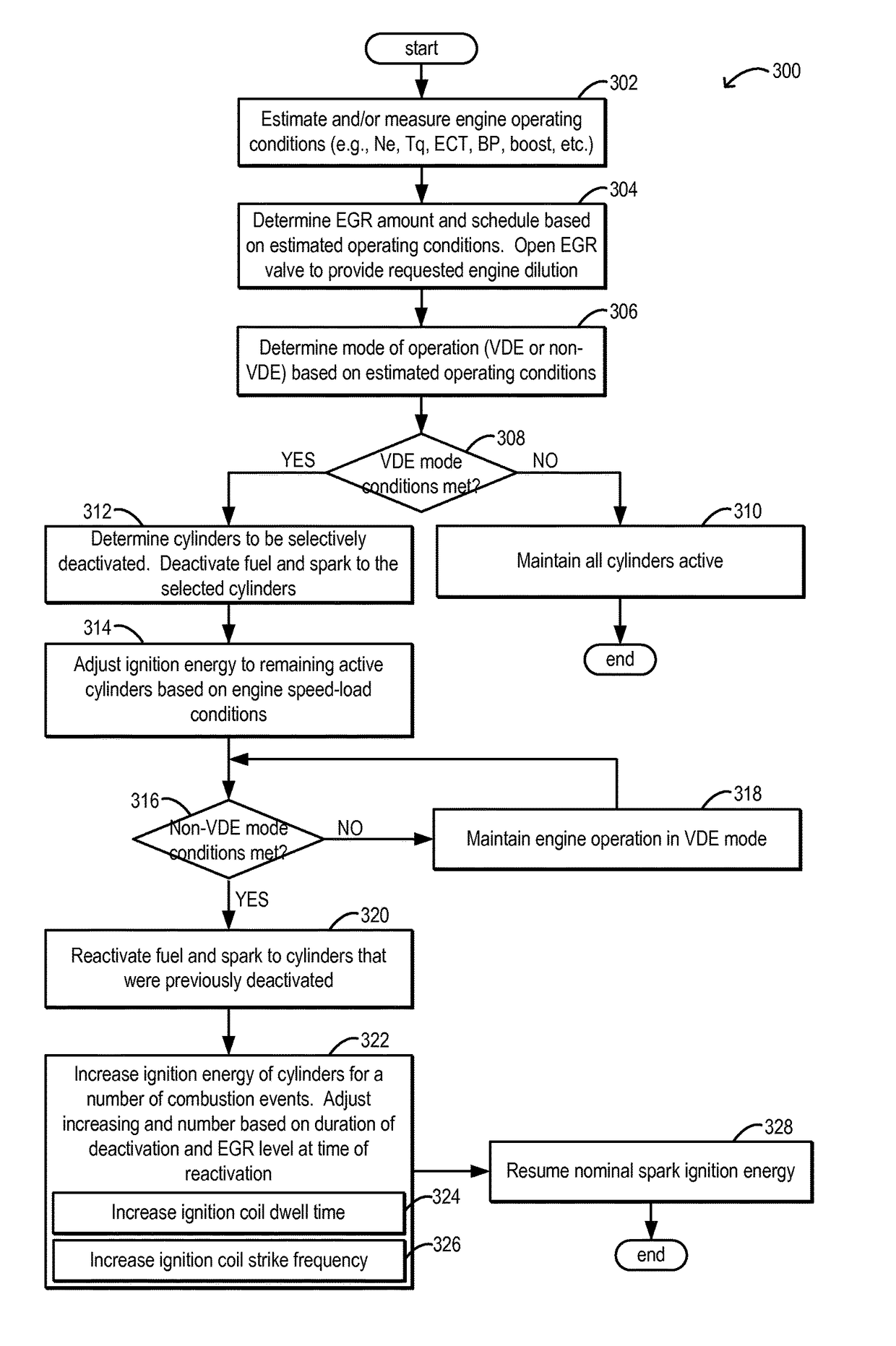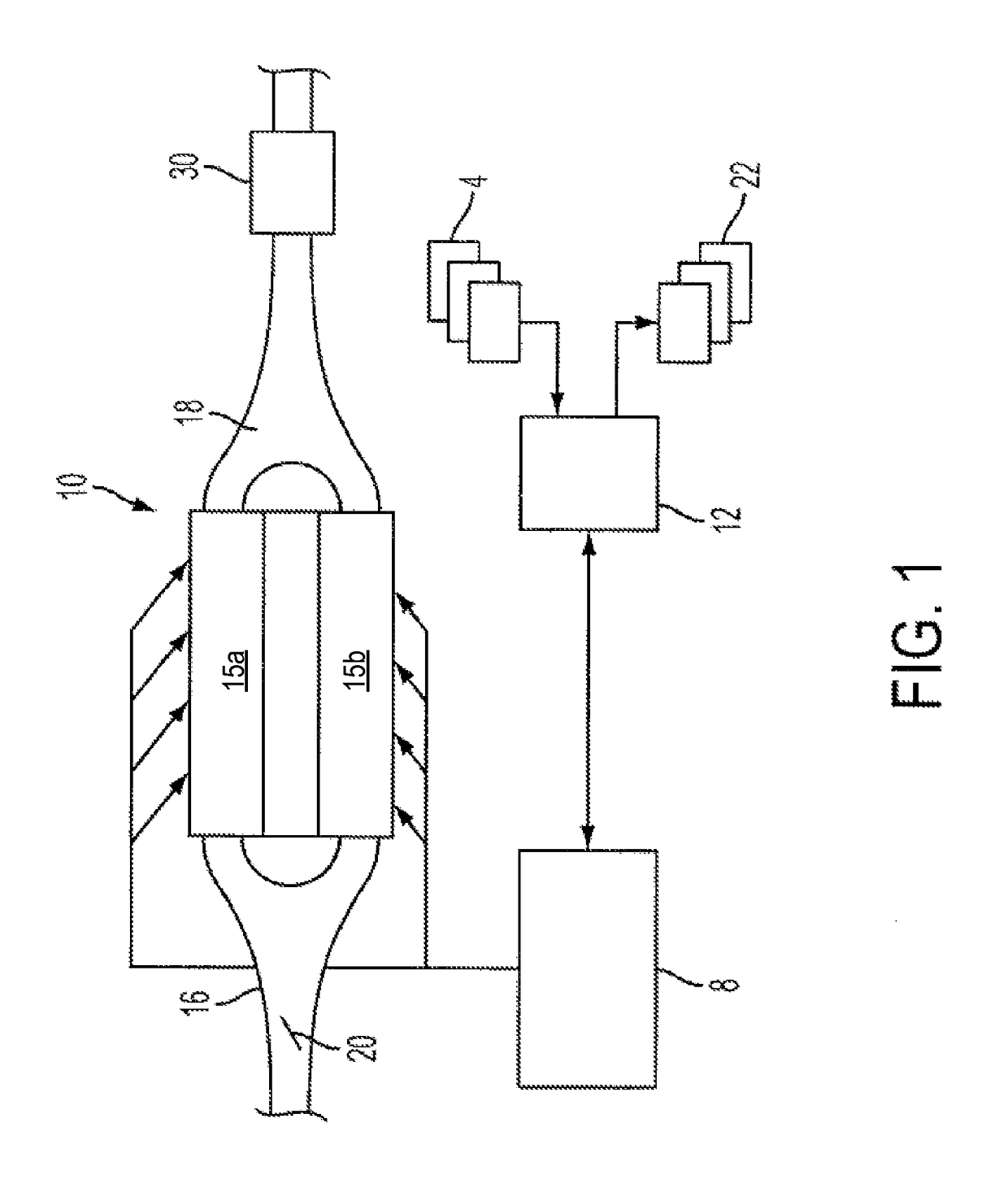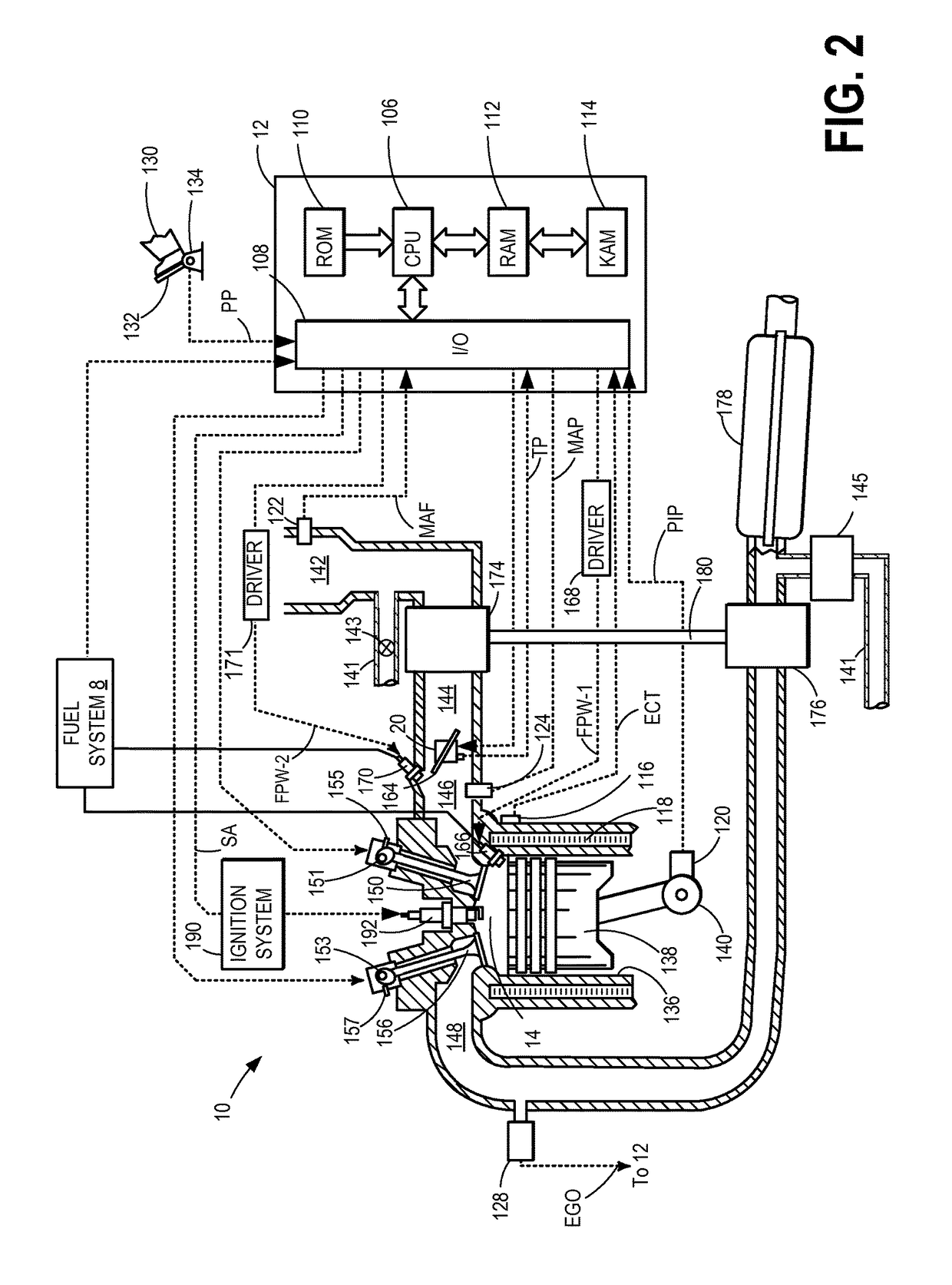Variable displacement engine control system and method
a control system and variable displacement technology, applied in the direction of electric control, ignition automatic control, machines/engines, etc., can solve the problems of less stable combustion during reactivation, exacerbate combustion problems, and degrade combustion stability during the transition, so as to increase ignition energy, increase ignition energy, and increase ignition energy
- Summary
- Abstract
- Description
- Claims
- Application Information
AI Technical Summary
Benefits of technology
Problems solved by technology
Method used
Image
Examples
Embodiment Construction
[0014]The following description relates to systems and methods for adjusting ignition output in cylinders of a variable displacement engine (VDE), such as the engine system of FIGS. 1-2. An engine control system may perform a control routine, such as the example routine of FIG. 3, to temporarily increase the ignition energy for a number of combustion events during cylinder reactivation (that is, during a transition out of a VDE mode of operation). The ignition energy may be increased via adjustments to an ignition strike frequency (multiple spark events in a combustion cycle) and / or an ignition coil dwell time. The ignition energy may be further adjusted based on EGR delivery to the engine during the transition. An example adjustment is shown with reference to FIG. 4. In this way, by modulating the ignition energy to a cylinder during cylinder deactivation and reactivation, combustion stability is improved and torque disturbances are reduced.
[0015]FIG. 1 shows an example variable di...
PUM
 Login to View More
Login to View More Abstract
Description
Claims
Application Information
 Login to View More
Login to View More - R&D
- Intellectual Property
- Life Sciences
- Materials
- Tech Scout
- Unparalleled Data Quality
- Higher Quality Content
- 60% Fewer Hallucinations
Browse by: Latest US Patents, China's latest patents, Technical Efficacy Thesaurus, Application Domain, Technology Topic, Popular Technical Reports.
© 2025 PatSnap. All rights reserved.Legal|Privacy policy|Modern Slavery Act Transparency Statement|Sitemap|About US| Contact US: help@patsnap.com



